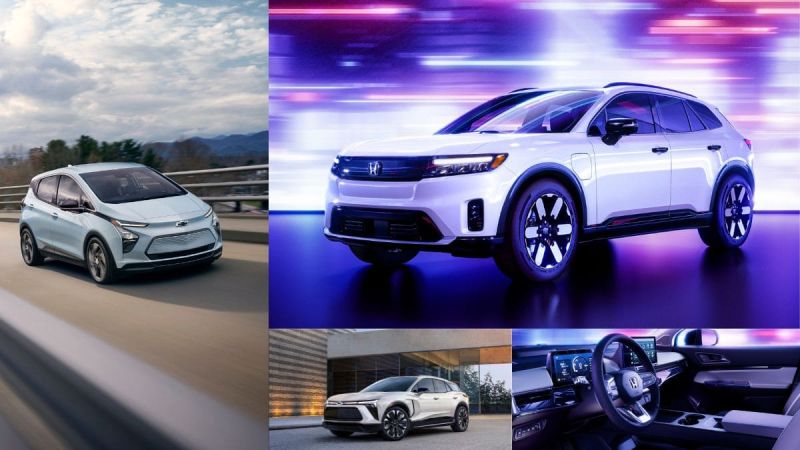Before delving into the reasons this isn’t as terrible as it sounds, let’s take a moment to collectively grieve (or angrily protest) what, on the surface, seems like a gutless or gut wrenching lack of leadership from two of the most storied automotive brands in history. Honda is an icon of efficient, sporty, inspired design and GM has built some of the most important electrified vehicles of the modern era in the groundbreaking Chevy Volt and the popular and affordable Chevy Bolt. The fact that they are throwing in the towel on the most important segment of electric vehicles, those priced under $30,000 (i.e. ones the majority of new car buyers can actually afford), is utterly frustrating for anyone that understands that electrification of our vehicles is one of the single most significant things we can do to address climate change. But let’s not dwell in that despair, or rage, because it isn’t as bad as it might seem.
First, the announcements from GM and Honda are only canceling their longer term plans to jointly utilize GM’s second generation Ultium battery platform and, so far, does not seem to impact the planned roll out of Honda’s first 300 mile range EV later this year, the Prologue nor its Acura ZDX counterpart. GM also isn’t abandoning its plans to develop its next generation of batteries, and likewise Honda isn’t giving up on affordable EVs either, it just may take a little longer for them to get them in production. As Reuters and CNBC point out, their collaboration was to produce affordable EVs together starting in 2027, so this announcement suggests that for these two brands at least, their options for EVs priced under $30,000 will be limited (perhaps to the next version of the Bolt in GM’s case), or nonexistent for at least the next 3 years. But that doesn’t mean there won’t be any sub $30,000 EVs. Remember, there are federal, state, and local incentives that effectively lower the cost of electric vehicles, and starting next year the federal incentive will have an option to be applied as a discount at point of purchase, according to nerdwallet.com. This means that, as long as you are purchasing an EV that qualifies for the various federal, state, and local incentives, you can lower the effective price of an EV significantly. For example, my friend just purchased a new Tesla Model 3 for a final price of about $29,000 after federal, state and local incentives were applied. So don’t abandon all hope, there are at least some options even now and there will be next year and the years after, too.
Second, while this could mean real trouble for GM, Honda and other brands that can’t bring more affordable EV products to market - because brands that can are going to runaway with their market share, potentially shrinking their long term customer retention or prospects - it is an opportunity for other brands like Kia, Hyundai, Nissan, Tesla etc. to sell more of their more affordable vehicles. Now, you may point out, fairly, that the MSRP for EVs from these companies is over $30,000 before any incentives (and not all of them sell EVs that qualify for incentives, too), so just how affordable are they? If you do some math, even if you end up paying over $30,000, the fuel (and maintenance) savings EVs can bring, compared to vehicles that run on fossil fuels (which includes standard hybrids that don’t plug in), is significant. Comparing the cost to drive 15,000 annual miles in a Toyota Prius getting 56 mpg, at today’s average US price of $3.54 for a gallon of gas, according to AAA, to Tesla’s least expensive Model 3 (like the one my friend bought for about $29,000) getting 4.2 miles per kWh at an average cost of approximately $.16 cents per, according to eia.gov, shows you that the Tesla saves about $377 a year on fueling costs. By the way, $29,000 happens to be the starting price of the second lowest Prius trim too. Also include other costs like an annual oil change and other combustion engine maintenance that no EV would ever require, and even in this best case scenario for the gas powered vehicle an affordable EV is going to save drivers at least $400 - $500 a year over a similarly priced gas powered vehicle (and a lot more than that if the comparison is to a less fuel efficient vehicle).
Are you mad or disheartened by GM and Honda’s announcement, or does it inspire you to look elsewhere or make different plans? Please leave your questions, comments and concerns below.
Images courtesy of Honda and GM.
Justin Hart has owned and driven electric vehicles for over 15 years, including a first generation Nissan LEAF, second generation Chevy Volt, Tesla Model 3, an electric bicycle and most recently a Kia Sorento PHEV. He is also an avid SUP rider, poet, photographer and wine lover. He enjoys taking long EV and PHEV road trips to beautiful and serene places with the people he loves. Follow Justin on Torque News Kia or X for regular electric and hybrid news coverage.












